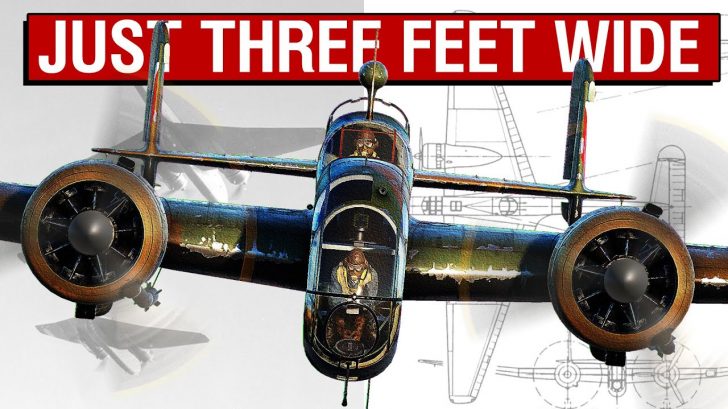The Handley Page Hampden was a British twin-engine bomber that served the Royal Air Force during the Second World War. It was also known as the “Flying Suitcase,” because of its cramped crew conditions.
Developing The Prototype
The Handley Page team proposed a radical design placing emphasis on performance rather than payload- the HP 52.
For 1932, the proposal was cutting edge- it featured an all-metal, semi-monocot construction, the plane would be covered in a flush riveted, stressed metal skin with the exception of the control surfaces, and it incorporated the latest Hanley page slot systems, including wingtip slots and hydraulically operated flaps.
It would also have three-blade variable pitch propellers, and it would have a retractable undercarriage.
Flying Suitcase
It would feature a deep and narrow fuselage at only three feet wide, and only the frontal section was big enough to accommodate the crew. This design would earn nicknames like the Flying Tadpole, or the Flying Suitcase.
While it had its advantages, it would later present a major problem with compartmentalizing the crew. The navigator was pretty much confined to the nose and the cockpit was so crammed that if the pilot was killed or injured, it would almost be impossible for somebody to take their place.
Additionally, from the point of crew comfort, the fuselage was too small to allow the allocation of facilities, making long-distance missions uncomfortable for those with small bladders. Still, at that time, and with the Air Ministry’s restriction’s firmly in mind, Handley Page felt it was a necessary compromise.
Into Service (At Last!)
Six years after the Air Ministry first issued its vague, restrictive, and mostly contradictory requirements, the Hamptons finally began to roll off the production line.
In producing the Hampton, Handley Page continued to perfect a construction technique that they had used with previous designs to great effect- split assembly. The section of the fuselage, wings and other components were individually assembled in jigs.
Early WWII Operations
Early operations were mostly limited to armed reconnaissance against German Naval units. In these early missions, they didn’t actually carry any bombs.
They did, however, carry propaganda leaflets and pretty soon, the Hampton was regularly used in what they call nickel raids. These raids carried on until 1940 and by the end of the year, 123 had been carried out for the loss of just one Hampton.
While some Hamptons were busy dropping propaganda leaflets over land, others were slightly more aggressive in dropping payloads over the sea. From the winter of 1939 to 1949, some Hamptons were modified to carry magnetic sea mines.
Obsolete But Still Useful
While it was technically the best maneuvering aircraft of its class, the bomber command had quickly realized that range, bomb load, and good defenses are not things that they want to sacrifice for this advantage.
In the middle of 1941, it was freely admitted that its usefulness as a frontline bomber in the traditional sense, was quickly running out. The combination of improved anti-aircraft defenses and the gradual development of better night fighter tactics meant that the Hamptons have become increasingly vulnerable.
The Hampton was still technically useful, and although way past its prime, the Hampton alongside Vickers Wellington and Armstrong Whitworth Whitley, would find itself side by side with much bigger bombers during the first major raids of 1942.



